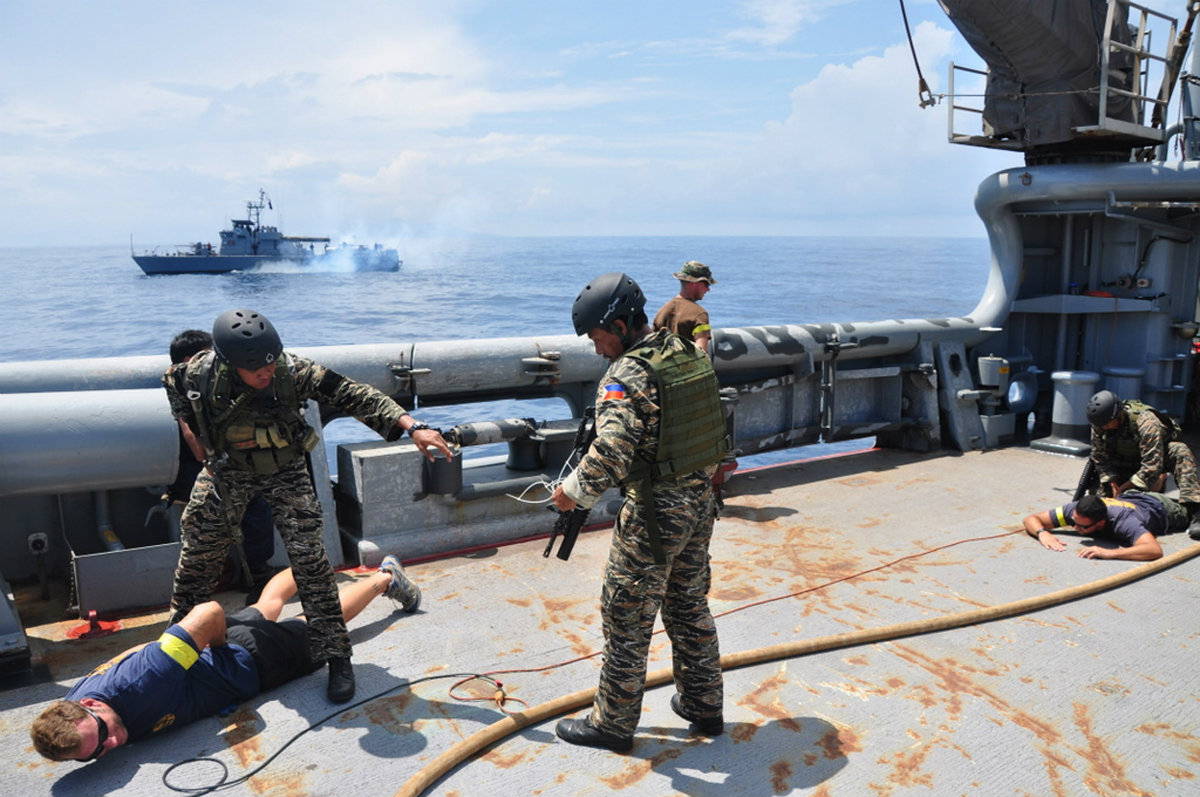U.S. vows to defend the Philippines amid China’s bold incursions
10/30/2023 / By Ramon Tomey

Amid tensions in the Pacific region stoked by China’s incursions, the U.S. has vowed to defend the Philippines from the communist nation.
The U.S. Department of State emphasized this assurance in a statement, citing a 1951 mutual defense treaty between Washington and Manila. Under the treaty, U.S. forces will come to the Philippines’ defense if its armed forces, ships or aircraft – including those from the Philippine Coast Guard (PCG) – come under an armed attack in the South China Sea.
“The U.S. stands with our Philippine allies in the face of the People’s Republic of China (PRC) Coast Guard and Maritime Militia’s dangerous and unlawful actions obstructing an Oct. 22 Philippine resupply mission to [the] Second Thomas Shoal,” the statement read.
The State Department blamed Beijing for the incident, declaring that Chinese forces likely “violated international law by intentionally interfering with the Philippine vessels’ exercise of high seas freedom of navigation.” Washington subsequently deployed forces to the area to patrol the waters and promote free navigation, Fox News reported.
The Oct. 22 hostilities arose when 15 Chinese vessels led by five ships of the Chinese Coast Guard blockaded two PCG ships and two boats resupplying Filipino forces at the Second Thomas Shoal, called Ayungin (silver perch, Leiopotherapon plumbeus) Shoal in the local language. The soldiers have been stationed aboard the BRP Sierra Madre, a vessel of the Philippine Navy intentionally grounded on the shoal in 1999. Chinese ships reportedly rammed a Philippine supply boat and a Philippine vessel, though no injuries were reported.
The next day, Philippine officials summoned an official of the Chinese Embassy in Manila to issue a strongly-worded protest. Despite this, Beijing even had the audacity to blame the PCG for the incident.
“China once again urges the Philippines to take seriously China’s grave concerns; honor its promise; stop making provocations at sea; stop making dangerous moves; stop groundlessly attacking and slandering China; and to tow away the illegally ‘grounded’ warship as soon as possible,” said Zhou Zhiyong, deputy chief of mission for the Chinese Embassy in Manila.
“Armed attacks” will invoke mutual defense treaty
In May, U.S. Defense Secretary Lloyd J. Austin and then-Philippine National Defense Secretary Carlito Galvez established the “bilateral defense guidelines.” The two defense chiefs also reaffirmed that “an armed attack” on either American or Philippine vessels “in the Pacific, including anywhere in the South China Sea” would invoke the mutual defense commitments under the 1951 agreement.
The Oct. 22 incident also prompted Philippine President Ferdinand Marcos Jr. to call an emergency meeting with the secretary of national defense and other top military and security officials to discuss the latest hostilities in the disputed waters. Gilberto Teodoro, Galvez’s successor and incumbent national defense secretary, said the chief executive has ordered an investigation of the high-sea collisions.
In a news conference after the meeting, Teodoro denounced Beijing for resorting to “brute force” in the region. He continued that China’s “aggression” endangered Filipino crew members.
“The Philippine government views the latest aggression by China as a blatant violation of international law,” said the defense secretary. “China has no legal right or authority to conduct law enforcement operations in our territorial waters and in our exclusive economic zone.”
Teodoro ultimately concluded that Manila is “taking these incidents seriously at the highest level of government,” adding that “the Chinese government is deliberately obfuscating the truth.”
However, according to writer Luis Miguel, the U.S. coming to the Philippines’ aid may not end in Washington’s favor. “There are indications that the U.S. no longer holds the clear military advantage over China,” he wrote in an Oct. 26 piece for the New American magazine.
“To compare America and China: The U.S. has 294 battle force ships, which is lower than the 355 the country is supposed to have by law. Meanwhile, China has a fleet of 340 ships and is expected to have more than 400 by 2025.” (Related: China now has the LARGEST NAVY in the world and is building MORE WARSHIPS each month.)
Head over to NationalSecurity.news for more similar stories.
Watch this video explaining why the Philippines is a strategic piece in America’s chess game with China.
This video is from the Iron Age News channel on Brighteon.com.
More related stories:
Philippines gives American forces access to 4 additional military bases.
China using military lasers to BLIND Philippine Coast Guard ship crews.
America could turn the Philippines into the next Ukraine in proxy war with China.
Sources include:
Submit a correction >>
Tagged Under:
Ayungin Shoal, chaos, China, incursions, military tech, military technology, mutual defense treaty, national security, Pacific region, philippines, resupply mission, Second Thomas Shoal, self-defense, United States, weapons technology, WWIII
This article may contain statements that reflect the opinion of the author
RECENT NEWS & ARTICLES
COPYRIGHT © 2017 CHAOS NEWS





















